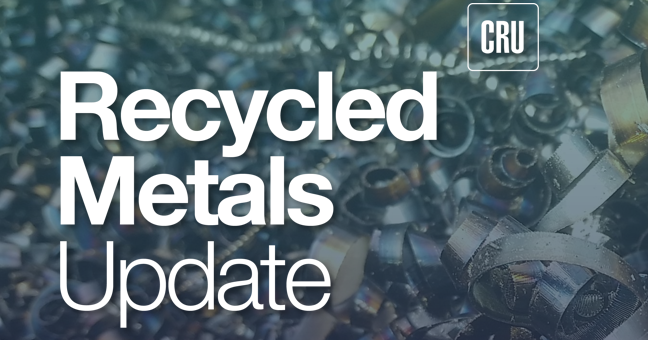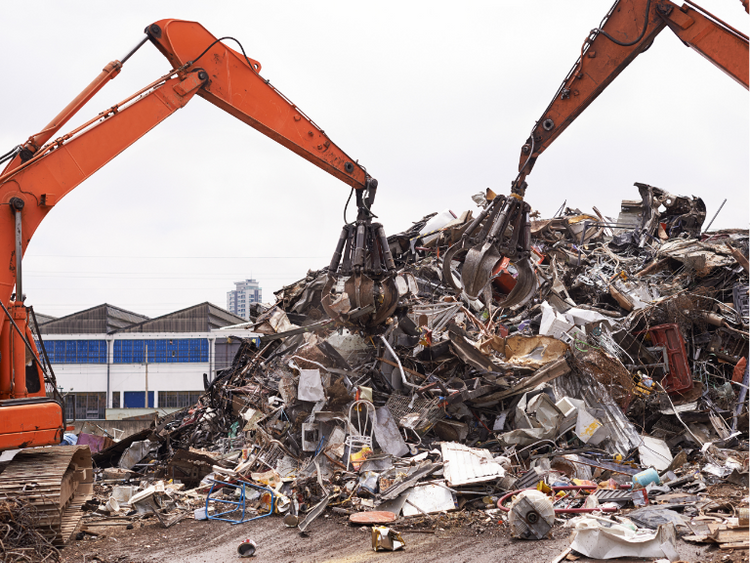Ferrous Scrap

Will prices recover in the second half of the year?
Written by Stephen Miller
July 5, 2024
After celebrating the July 4th holiday, let’s have a look back at the first half of 2024.
The year started off rather promising for ferrous scrap and pig iron. In January, prices for prime scrap in the US rose over $50 per gross ton (gt) as mills tried to build inventory after closing their 2023 books. Some mills ran into trouble as industrial scrap generation was restrained in December due to the holiday schedule. They met resistance at these levels, and several districts had to increase their prices beyond their initial levels.
The market basically moved sideways in February and March with slight adjustments downward. April and May saw some deterioration in scrap prices, mostly for prime grades. But in June, the market fell significantly. As we approach July, prices are trending down once more.
During this time, we saw hot-rolled coil (HRC) prices starting to nose-dive. Prices fell just under $200 per short ton (st), and still show no concrete signs of strength going into Q3. The sector seemed to lose its momentum, which also hurt demand for prime scrap. It seemed to take the brunt of the price declines over these months.
Prime scrap is due for another large decline in July. That could place its price substantially under shredded scrap, which is technically a higher-residual grade of #2HMS.
What is going on?
Much has been made of the need for prime scrap as the North American steel market continues to add flat-roll capacity. The perceived shortage has caused steelmakers to buy scrap companies that specialize in prime grades as they characterize #1 Busheling and Bundles as the new “precious metal.” This is hardly the case now. It shows just how volatile ferrous scrap can be during times of limited demand.
Where are we going from here?
Well, here is a guess. The scrap market will continue to be weak throughout the summer. As we go into late-August and September, scrap prices should improve as the slowdown in obsolescent flows and less industrial scrap generation starts to pressure mills. These mills will be returning to better operating rates after their outages and cutbacks are out of the way. After the initial price bumps, the scrap market should revert to its normal seasonal pattern. Prices may drift soft sideways through November and then start to firm as we head into winter.
I should mention, this is predicated on some improvement in HRC production. Also, it is expected that the collection process of obsolete scrap will not have been damaged to the point, due to weak pricing over the summer months, where it can’t recover in time when mills start to need more material.
Another thing to watch is the export market, which has seen continued strength during the periods when domestic prices have basically cratered. As more scrap leaves our shores, less will be available domestically.
Of course, this is just my limited view of things. And I have certainly been wrong before. We have an election coming up. There are several wars around the world that could affect all markets. But it seems these economic and geopolitical issues are always present. As Billy Joel said, “We didn’t start the fire, it was always burning.”
Good luck in the second half!

Stephen Miller
Read more from Stephen MillerLatest in Ferrous Scrap

Scrap market chatter this month
Scrap buyers sound off on prices, demand, etc., in SMU's monthly scrap survey.

MetalX founder, former OmniSource CEO Danny Rifkin passes, funeral April 6
MetalX Founder and CEO Danny Rifkin - born in 1954 - died on April 1, surrounded by family.

US pig iron tags hold despite potential scrap price drop
The price of pig iron for the US market remains firm despite a potential drop in domestic ferrous scrap prices going into April.

Miller on Scrap: Ferrous mart losing steam in April on auto woes
The US ferrous scrap market rise this year is showing signs of slowing down as US steelmakers adjust production in line with slower automotive production and sales. But President Trump's announcement of 25% auto tariffs could change things very fast.

Turkey political woes hit US scrap export market
The export situation from the US East Coast was interrupted last week after a political event in Turkey.
